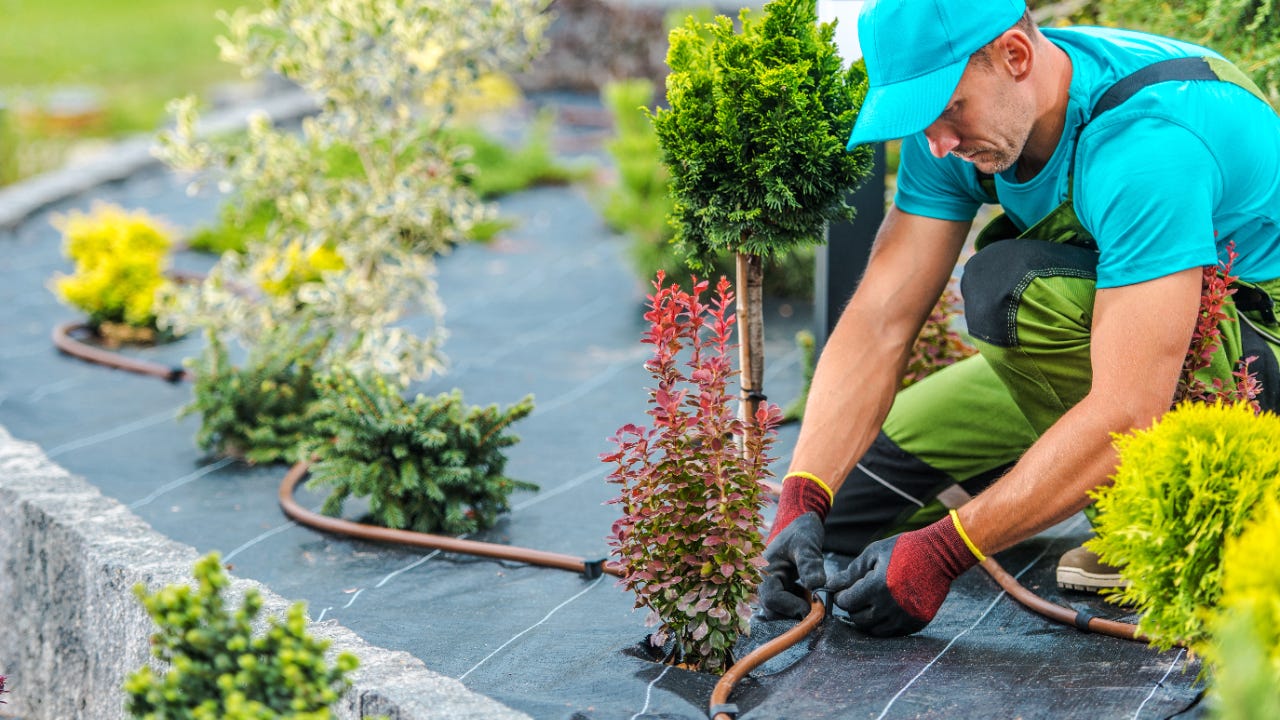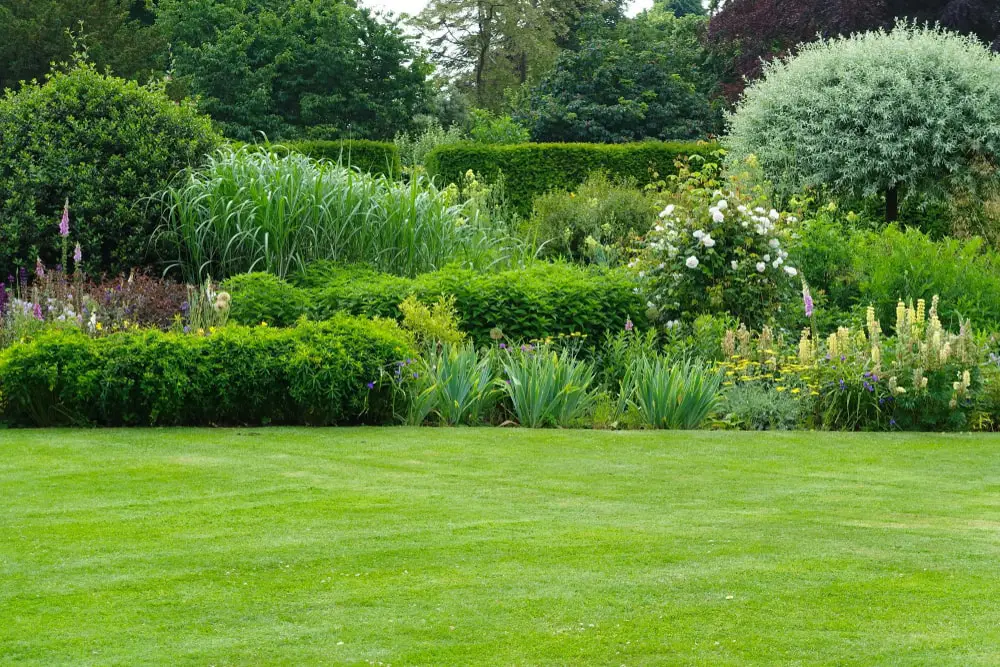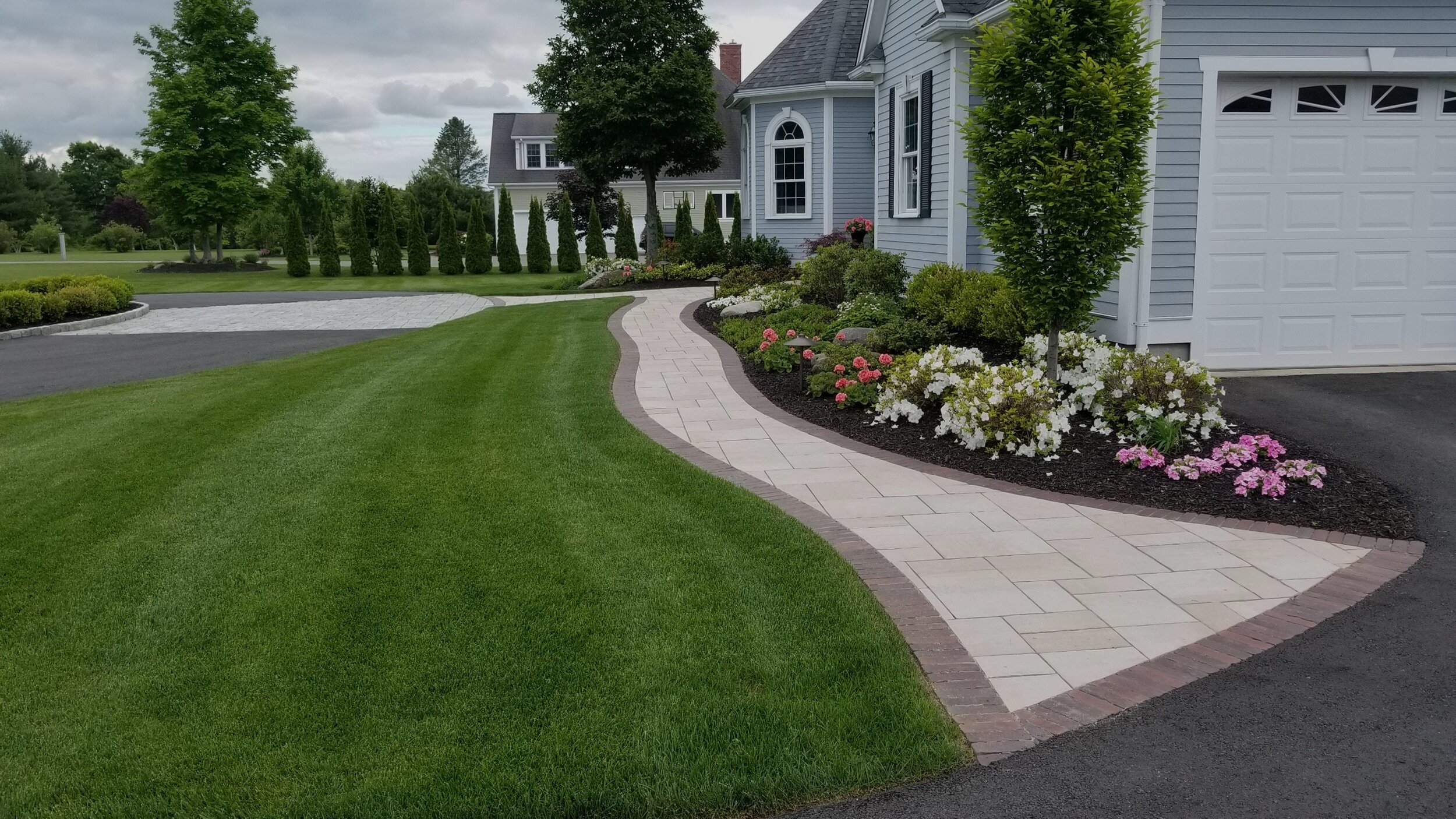Achieve Spectacular Results with Ingenious Palm Desert Landscaping Styles
Achieve Spectacular Results with Ingenious Palm Desert Landscaping Styles
Blog Article
A Comprehensive Overview to Creating and Implementing Effective Landscaping Solutions
The art and science of landscape design expand beyond plain looks; they include a thoughtful assimilation of design concepts, ecological stewardship, and useful execution. What techniques can one use to ensure these landscapes not only flourish however also prosper in consistency with their surroundings?

Comprehending Landscape Style Concepts
One might question what foundational aspects add to reliable landscape style. At its core, effective landscape style depends upon numerous essential concepts that assist the plan and selection of components within an area. These principles consist of unity, rhythm, percentage, and equilibrium, each offering to produce a harmonious outdoor setting.
Unity describes the cohesive partnership among various components, ensuring that they interact aesthetically and functionally. Equilibrium can be accomplished through asymmetrical or in proportion arrangements, enabling the landscape to feel steady and welcoming. Proportion entails understanding the range of elements in relation to each various other and the surrounding atmosphere, advertising aesthetic harmony and comfort.

Assessing Your Outdoor Area
Prior to applying the principles of landscape design, a thorough assessment of your outside area is essential. This initial assessment assists specify the extent of your landscape design task and ensures that your design lines up with the special features of your residential or commercial property. Begin by evaluating the dimensions of your area, taking exact dimensions to recognize the readily available area for various elements such as pathways, gardens, and outdoor patios.
Next, observe the existing features of your landscape, including topography, dirt quality, and drainage patterns. These factors considerably influence plant selection and placement. Additionally, assess the sunlight exposure across different locations throughout the day, as this will certainly influence the kinds of plants that grow in your yard.
Think about the microclimates developed by frameworks, trees, and other challenges, as they can affect temperature and moisture levels. Last but not least, keep in mind of any existing plants or hardscape elements that you desire to preserve or get rid of. This detailed assessment prepares for a effective and well-informed landscape design solution, making certain that your style is not only cosmetically pleasing but additionally practical and lasting for many years ahead.
Sustainable Landscape Design Methods
These methods not only advertise ecological equilibrium yet likewise boost the visual and useful worth of a landscape. Executing effective irrigation systems, such as drip watering, reduces water waste and guarantees that plants receive adequate dampness (Palm Desert Landscaping).

One more reliable technique is the tactical positioning of trees and hedges to supply all-natural windbreaks and color, thus reducing power prices (Palm Desert Landscaping). Rain gardens can be integrated right into the landscape layout to take care of stormwater runoff efficiently, filtering system toxins prior to they get in waterways
Choosing the Right Plants
Choosing the right plants for your landscape is critical to attaining both visual appeal and ecological harmony. The process begins with an understanding of your regional environment, dirt problems, and the certain microenvironments within your landscape. Analyzing factors such as sunlight Visit Website exposure, moisture levels, and existing flora will help you pick plants that thrive in your unique setting.
Consider incorporating native plants, as they are well-adapted to local problems, call for less maintenance, and support local wild animals. In addition, picking a varied variety of types can improve biodiversity while decreasing the risk of disease and pest episodes. It is this website vital to review the development routines, flowering periods, and seasonal shades of possible plants to produce a cohesive and dynamic landscape.
Additionally, think about the planned use the area; for example, if the location will experience high foot traffic, go with resistant ground covers. By thoughtfully choosing plants that straighten with both your visual goals and ecological requirements, you can develop a sustainable landscape that not only improves your residential property however also adds positively to the bordering environment.

Implementation and Upkeep Methods
As soon as the right plants have been selected for your landscape, the emphasis changes to effective application and continuous upkeep approaches. Successful installation starts with correct website preparation, which includes dirt testing to determine nutrient levels and pH, followed by amending the dirt as needed. Meticulously arrange plants according to their growth practices and light demands, making sure ample spacing to advertise healthy and balanced development.
Watering is a crucial element of application. Establish a watering schedule that thinks about the particular requirements of each plant types, changing for seasonal changes. Utilizing drip irrigation systems can enhance water efficiency and reduce drainage.
Upkeep approaches have to be carried out to make sure the durability and vitality of your landscape. Normal tasks include weeding, mulching, and trimming to manage development see this website and stop illness. Fertilization should be conducted based upon dirt tests, offering the necessary nutrients without over-fertilizing.
Monitoring for pests and conditions is vital; early detection can prevent substantial damage. Seasonal modifications to maintenance regimens, such as winterizing perennials and preparing for springtime growth, will certainly guarantee that your landscape remains visually attractive and healthy year-round.
Verdict
Successful application and continuous upkeep better guarantee the durability and vigor of landscapes. By incorporating these components, landscapes can be changed right into gorgeous, practical settings that advertise biodiversity and add positively to community health.
One might wonder what foundational elements contribute to effective landscape design. At its core, successful landscape style hinges on several essential principles that assist the plan and choice of aspects within an area.Choosing the right plants for your landscape is vital to accomplishing both aesthetic charm and environmental harmony. It is important to assess the growth habits, blooming durations, and seasonal shades of prospective plants to produce a cohesive and dynamic landscape.
When the best plants have been picked for your landscape, the emphasis moves to efficient implementation and ongoing upkeep methods.
Report this page